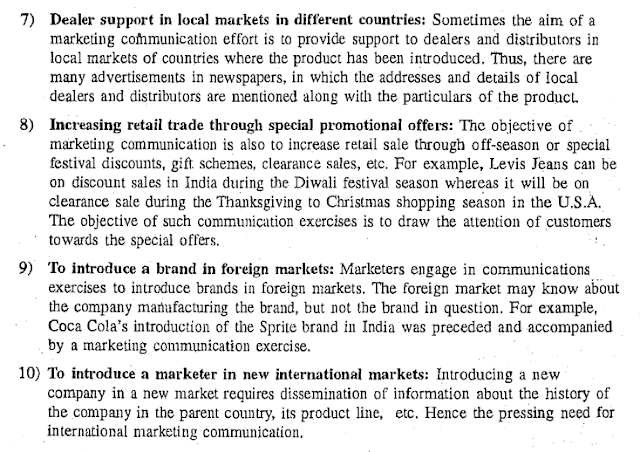Solutions to Assignments
IBO-02 International Marketing Management
Solutions to Question No. 1
After a firm has chosen an attractive market, the next decision to be made is the timing of entry. Entry is considered early, when an international business enters the market prior to other foreign firms and late when it enters after other firms have already established themselves in the market. Entering the market early brings first mover advantages that include the opportunity to establish a strong brand name, acquire demand from the market, increase sales volume, and create switching costs that attach a customer to a given product or service (Kotabe & Kothari, 2016).
However, entering the market early can bring pioneering costs that a firm that enters the market later may be able to avoid. Pioneering costs include the costs of promoting and establishing the product. The probability of a firm surviving in a market increases, if they enter after several other firms have already established the market. Government regulations can also put an early entrant at a disadvantage, because laws can hinder the value of the early entrant’s investment (Hill, 2013).
The next decision that needs to be made is the scale of entry and strategic commitments. Significant assets and resources are needed for a large scale foreign market entry, which commits a firm to the market. Strategic commitments alter the competitive playing field for other firms and produce various changes and inflexibility for the firm. Large scale market entry implies rapid entry and offers the first mover advantages, such as demand acquisition, scale economies, and switching costs.
An entry on a smaller scale allows the firm to build themselves up gradually while becoming better acquainted with the market and limiting exposure to the market. Small scale market entry can also make it difficult for the firm to increase market share, because of their lack of commitment to the market. The small scale entrant reduces potential risk but also misses out on the opportunity for first mover advantages (Porter, 1980).
Taking all of these considerations into mind, there are not right or wrong decisions for a firm to make. Each series of decisions offers unique rewards and benefits and costs and risks.
Different companies grow globally by adopting different types of strategies of entering into foreign markets. Some companies even adopt different strategies for different nations. Various strategies of entering into foreign markets are discussed as follows:
(1) Exporting: Exporting is the most traditional way of entering into foreign market. Initially, a domestic business unit starts its international business by exporting to one nation. Gradually, it expands its exports to various nations. Exporting is very useful when a country has surplus production capacity i.e., its domestic consumption is less than its production capacity
(2) licensing and Franchising: In licensing business unit of one country (Licensor) allows the business unit of other country (Licensee) to use its technical know-how (patents, trademarks, copyrights, etc.). For this, licensor charges royalty from license for a stipulated period of time. In most of the nations, the rate of royalty ranges from 5 per cent to 8 per cent of sales. Licensing agreements enable the licensor to make maximum utilization of its intellectual property. Licensee, too, can avail the benefits of modern technology by entering into licensing agreement. Under franchising, business unit of one nation (Franchiser) grants right to do business in a particular manner to the business unit of other nation (Franchisee). This right can be with regard to selling the goods under the brand name of franchiser. In some cases, the key components are provided by franchiser to franchisee. In another form of franchising, the manufacturer may appoint dealers in other nations. For example, soft drink manufacturers like Pepsi and Coca-Cola provide the key part of their product, Le. syrup to their franchisee in other nations. The franchisees have their own bottling plants where they make soft drinks but they sell the same under the brand name of franchiser.
(3) Contract Manufacturing: In this agreement, business unit of one nation enters into agreement with manufacturers of other nations to allow them to manufacture the goods at their own, but right to market these goods is retained by the parent foreign enterprise. Under such agreement, the parent foreign enterprise can expand its business to other nations without setting up its own manufacturing plant in other nations. If the parent enterprise feels that marketing in a particular nation is not much profitable, it can have easy exit from that nation as it has not set up its own production plant in other nation.
(4) Joint Ventures: It is a common strategy for getting an entry into foreign market. In joint venture, foreign partner makes an arrangement with local unit of other country in which ownership and management are shared by iocal unit and foreign partner. Local unit has thorough knowledge of domestic conditions and it has its local set-up and infrastructure like manufacturing unit, distribution network, service centres, etc.
(5) Management Contracting: In this arrangement, parent enterprise of one nation sets up management agencies. Through these management agencies, business units of other nations are managed without any stake in ownership/capital. It means the parent enterprise simply provides its managerial expertise to business units of other nations. For this, some fees in the form of percentage of profit or lump sum fee is charged by parent enterprise.
(6) Wholly Owned Subsidiaries: Some companies open wholly owned manufacturing units in other nations. These subsidiary companies are wholly owned by their parent company. MNCs prefer this route for globalization when they want to have complete control over manufacturing activities in other nations. Instead of entering into joint ventures, licensing, franchising, exporting, etc., they set up their own subsidiary units in different nations. MNCs have full ownership and control over these subsidiary units. For example, LG Electronics has set up LG India as its wholly owned manufacturing subsidiary unit.









